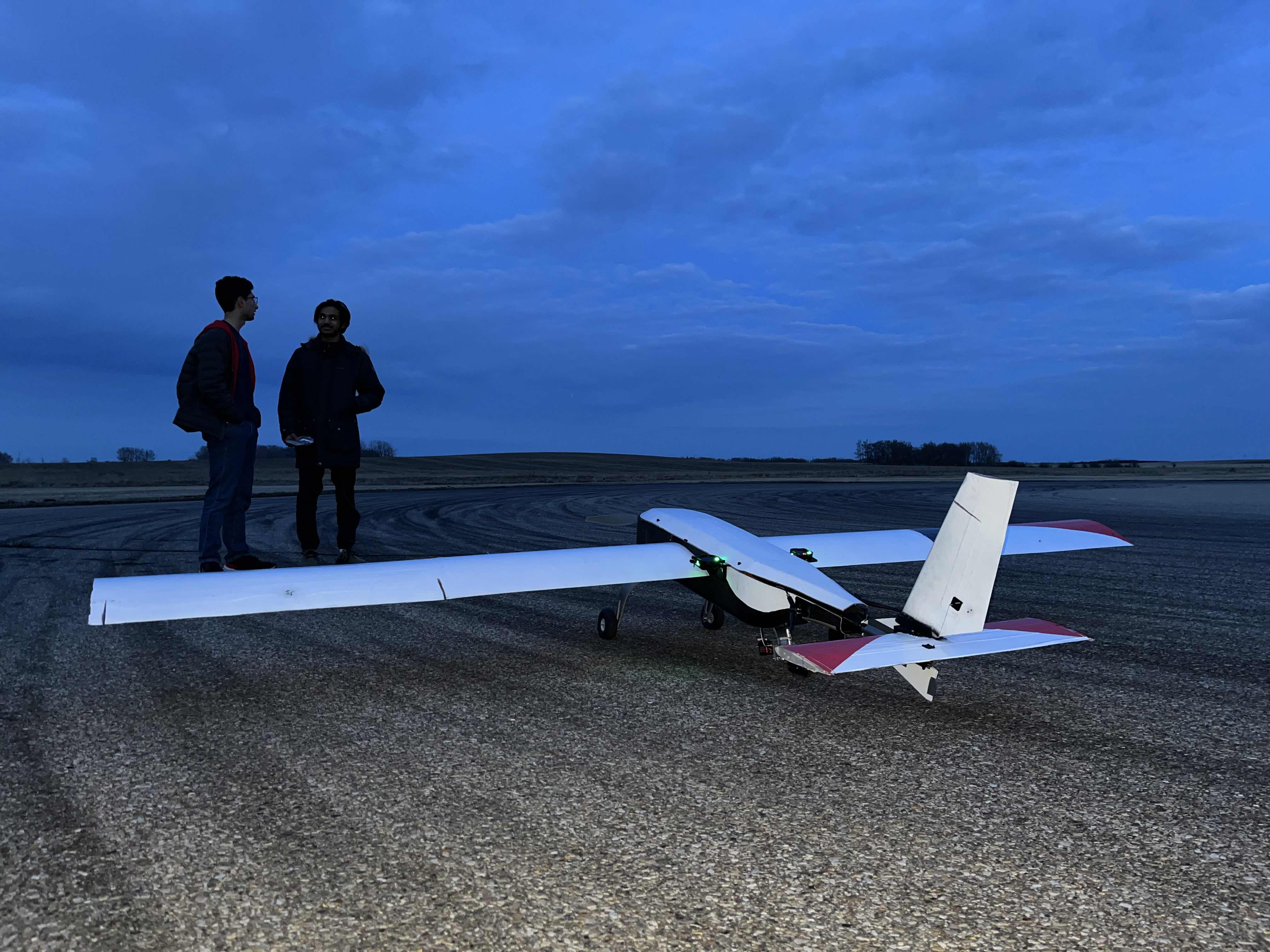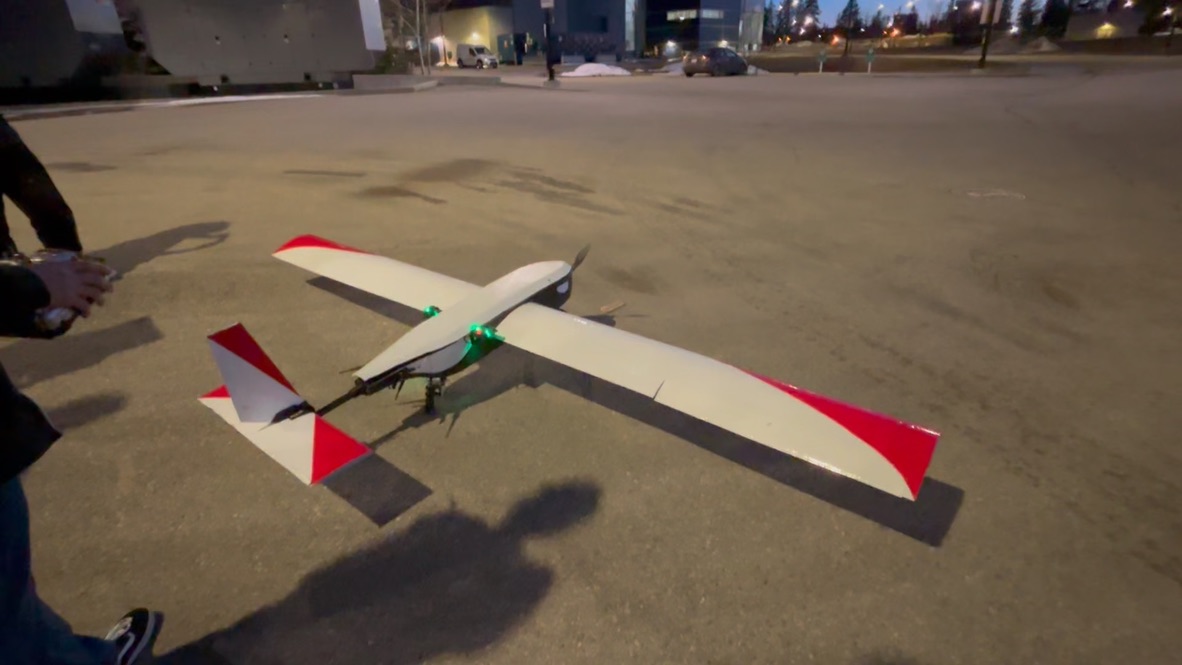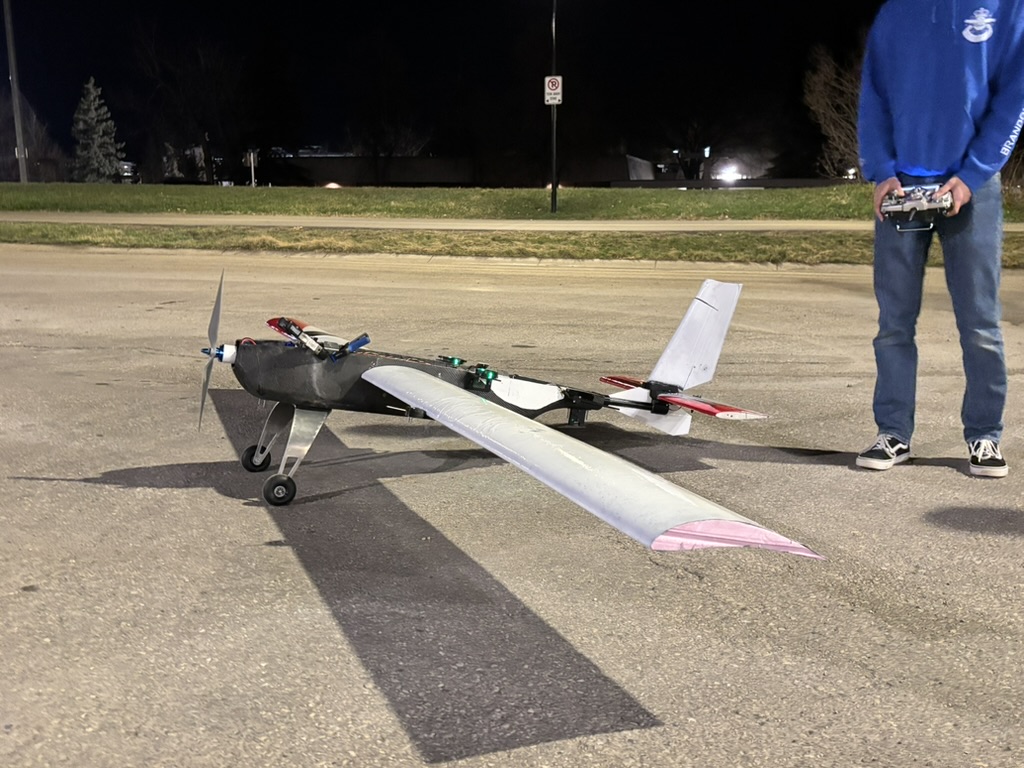Full Mission Fly Day
By All Teams | May 2, 2025

Our team wrapped up a successful evening flight at the Airdrie Flying Club, marking a key milestone as we near SUAS 2025. Orca flew a fully autonomous mission through a complete set of GPS waypoints, covering over 15 kilometers. The aircraft performed reliably throughout the entire route, giving us strong confidence in our flight control and navigation systems.
We also began experimenting with our custom mission upload and payload drop logic. Early tests show that our waypoint sequencing and drop trigger logic are working as intended, with clean flight transitions from the entry waypoint into the target zone.
Our pilot continues to sharpen takeoff and landing execution, helping the rest of the team focus on testing autonomous logic, ground station systems, and onboard hardware. Setup time was incredibly efficient — less than 30 minutes from unpacking to launch — allowing us to maximize flying time with minimal downtime.
We captured valuable aerial imagery during this flight that will feed into our object detection and mapping pipelines. This real-world data is key to improving our vision models before competition.
Based on performance during this mission, our estimated range now exceeds 60 kilometers — a significant boost to our confidence in covering the full SUAS course during competition.
Image Gallery:

Orca taxi test

Side profile of Orca with no roof